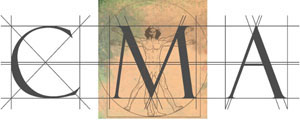Herbalism
Herbalism refers to the use of plants to treat a variety of medical conditions. The herbs are administered in many ways and are used both internally and topically. Many are available commercially.
This document provides general information on what to expect when you visit a herbalist, as well as explaining briefly how the discipline works. It must be noted, however, that every herbalist works in an individual way, and may subscribe to slightly different theories as to how the practice is carried out. It is always advisable that you ask to see relevant qualifications and discuss the treatment offered to you by the practitioner if you are in any doubt whatsoever.
What is herbalism?
Many of the pharmaceutical drugs we use in this day and age are derived from herbs. However, these drugs are based on what are considered to be the plant’s ‘active’ ingredients (e.g., certain chemicals that have been isolated from the original plant), whereas herbalism utilises the whole plant, or at the very least the seed, root, or flower. It is believed that these so-called ‘inactive’ ingredients play a significant role in determining the herbs overall therapeutic effect. It is also felt that although some herbs do have side effects, those caused by herbal preparations are far less severe than the reactions experienced when taking pharmaceutical drugs.
Herbalism, like all forms of complementary medicine, treats the person as a whole, believing that the body has its own “vital force” (an ability to heal itself). Herbs help support this system, enabling it to restore balance (homeostasis) in the body.
Main uses
All physical and some mental and emotional disorders.
What to expect when you visit a therapist
You will be asked questions relating to your medical history and perhaps that of your immediate family. Lifestyle questions regarding such matters as your dietary habits, sleep patterns, exercise regime and stress levels will also be put to you, to ensure that a holistic approach is taken. Other relevant information required by the herbalist includes details of the medication you are currently taking (to ensure that there are no harmful drug / herb interactions) as well as your opinion on what you think is wrong with you.
The herbalist may carry out a series of tests such as checking your glands, assessing your breathing via a stethoscope and monitoring your heart rate. You may need to undress for some of these tests. Following the consultation and tests you will be prescribed a herbal preparation comprising of one or more herbs. You may be given them in tablet, tincture, capsule, or dry form (the latter preparation being boiled up at home). Advice on exercise and /or diet may also be given. Your next appointment is usually for the following week with subsequent visits dependant on the nature of the condition being treated and your response to the herbs. As with all complementary therapies the therapist may advice you to visit a conventional doctor too. For minor ailments you may only need two visits, whilst more serious conditions may require monthly visits until thing start to improve.
History (in brief)
Early records show that the Egyptians used herbal medicine as far back as the 16th century BC. Likewise, in ancient Greece a herbal healing tradition rapidly gained popularity. The so-called ‘father of medicine’, Hippocrates, had a significant impact on the burgeoning use of herbs, practising a system of holistic medicine that focused on the person rather than the disease. However, it was the Greek military doctor Dioscorides who wrote a book on herbal medicine, called “De Materia Medica”, which was to become the foundation for all subsequent materia medicas for the next 1600 years.
In the 2nd century, Galen, another Greek doctor, also wrote a major book on herbal medicine called “De simplicibus medicinae”, which was used up until the Middle Ages by the Islamic physicians. The word of herbalism was carried back to Europe via the crusaders and the texts were translated in Latin. The information became much more widespread with the advent of printing, but only if you could read! Herbal folklore was passed on from one generation to the next (by word of mouth in most cases). In the 16th century the work of John Gerard, who was greatly influenced by a scientist called Paracelsus, set his ideas pertaining to herbalism in print, and another key player of the herbal tradition appeared at the end of 1500’s by the name of Nicholas Culpeper.
In the 18th century, due to the expansion of science, herbalism took a back seat in Europe but survived in the US thanks to Samuel Thomson, who set up an herbal school in the early 19th century. In the 1830’s there was a revival in the UK, leading to the World Health Organisation report into herbalism stating that herbalism had a valuable role in healthcare.


